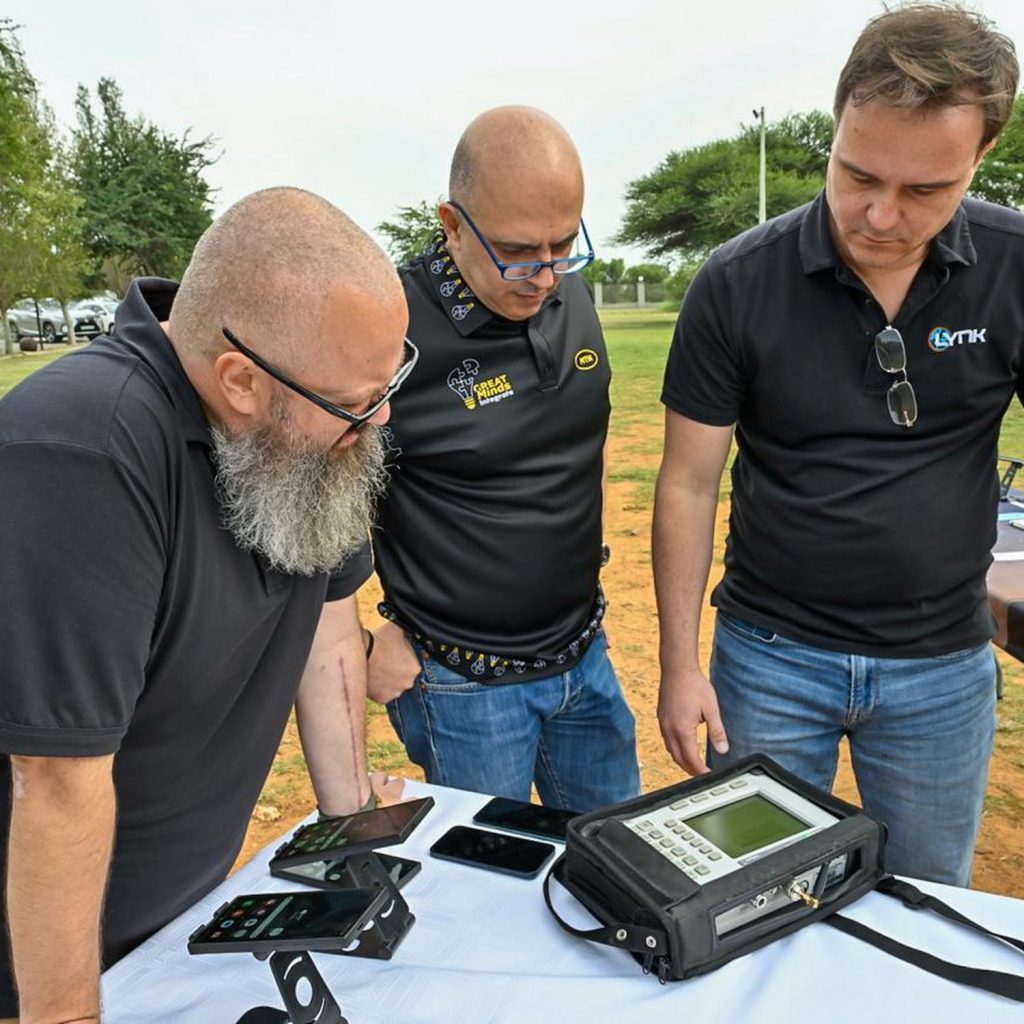Telecoms operator MTN South Africa and low Earth orbit (LEO) satellite provider Lynk Global have carried out a successful technical trial of what they claim is Africa’s first direct satellite-to-mobile device phone call.
“This marks the first satellite-to-unmodified-mobile phone call made on the African continent,” Lynk Global Chief Commercial Officer Dan Dooley said about the test, which took place on Thursday.
The call took place in Vryburg – an agricultural town in the North West province of South Africa which has a population of about 21,000 – as part of a technical trial to test voice call quality and SMS capabilities over an LEO satellite connection.
“The technical trial was part of our work to find potential solutions to the challenges of providing coverage in underserviced, rural and remote areas,” added MTN South Africa CEO Charles Molapisi.
Traditionally, specialized satellite phones work by connecting directly to orbiting satellites, unlike cell phones, which connect to land-based towers.
Lynk Global’s technology is device-agnostic, ensuring compatibility with existing mobile phones and requiring no special modifications.
Molapisi said the call marks a proof of concept of MTN’s ability to complement its ground-based cell towers and other infrastructure via LEO satellites.
“The implications of potentially leveraging satellite partnerships will not only help MTN achieve its goal of 99% broadband population coverage, but most importantly benefit all South Africans,” the MTN SA CEO added.
The trial followed the Independent Communications Authority of South Africa (ICASA) approving the use of radio frequencies on MTN-licensed IMT spectrum for the duration of the trial.
Rising satellite services
African operators have for some time been investigating partnerships with satellite providers to allow for direct-to-mobile satellite connectivity to close gaps in network coverage.
This is particularly relevant for remote areas where terrestrial telecom infrastructure is difficult or expensive to deploy.
In September 2023, Vodafone – which is a majority shareholder in pan-African Vodacom – announced a partnership with Amazon’s Project Kuiper LEO constellation to extend the reach of its 4G and 5G telecom networks in Africa and Europe.
In April 2023, Lynk Global signed a commercial contract with Telecel Group to provide services to Vodafone Ghana’s subscribers.
South African operator Cell C has also been exploring partnerships with LEO satellite providers.
_(1).jpg?width=1280&auto=webp&quality=80&disable=upscale)
MTN SA Chief Technology Officer Rami Farah and Lynk Global Chief Commercial Officer Dan Dooley. (Source: MTN South Africa)
In the broadband space satellite Internet is rising in popularity as providers like Starlink and Eutelsat OneWeb make inroads across Africa.
South African regulator ICASA recently ran public hearings to discuss a proposed new licensing framework for satellite services in the country.
Starlink’s parent company SpaceX previously asked ICASA to rethink local policy which requires license holders to have 30% shareholding by “historically disadvantaged” groups, part of the country’s black economic empowerment regulations.
SpaceX provided a written submission ahead of the hearings outlining its argument, but withdrew from participating in the hearings at the last minute.
Benefits of LEO satellite connections
LEO satellites are usually situated about 2,000km above Earth, meaning that orbital periods are between 90 minutes and a few hours.
MTN said this is suitable for applications that need rapid data communication or frequent re-visits of specific areas.
In comparison, geostationary (GEO) satellites are usually situated at about 36,000km above Earth, while medium-Earth orbit (MEO) satellites sit at about 9,000km above Earth.
“The lower altitude contributes to lower signal travel times, resulting in lower latency. This is crucial for real-time communication, video conferencing and online gaming,” MTN said in a statement.
MTN said that the because of the increased use of satellite technology the cost of launching a 1-kilogram payload into space “has reduced from around US$85,000 per kg in the 1980s to about US$1,000 today.”
MTN said that direct satellite-to-phone contact offers several other potential benefits, including enabling the development of mass notification capabilities for critical alerts such as weather warnings, health advisories and humanitarian updates



